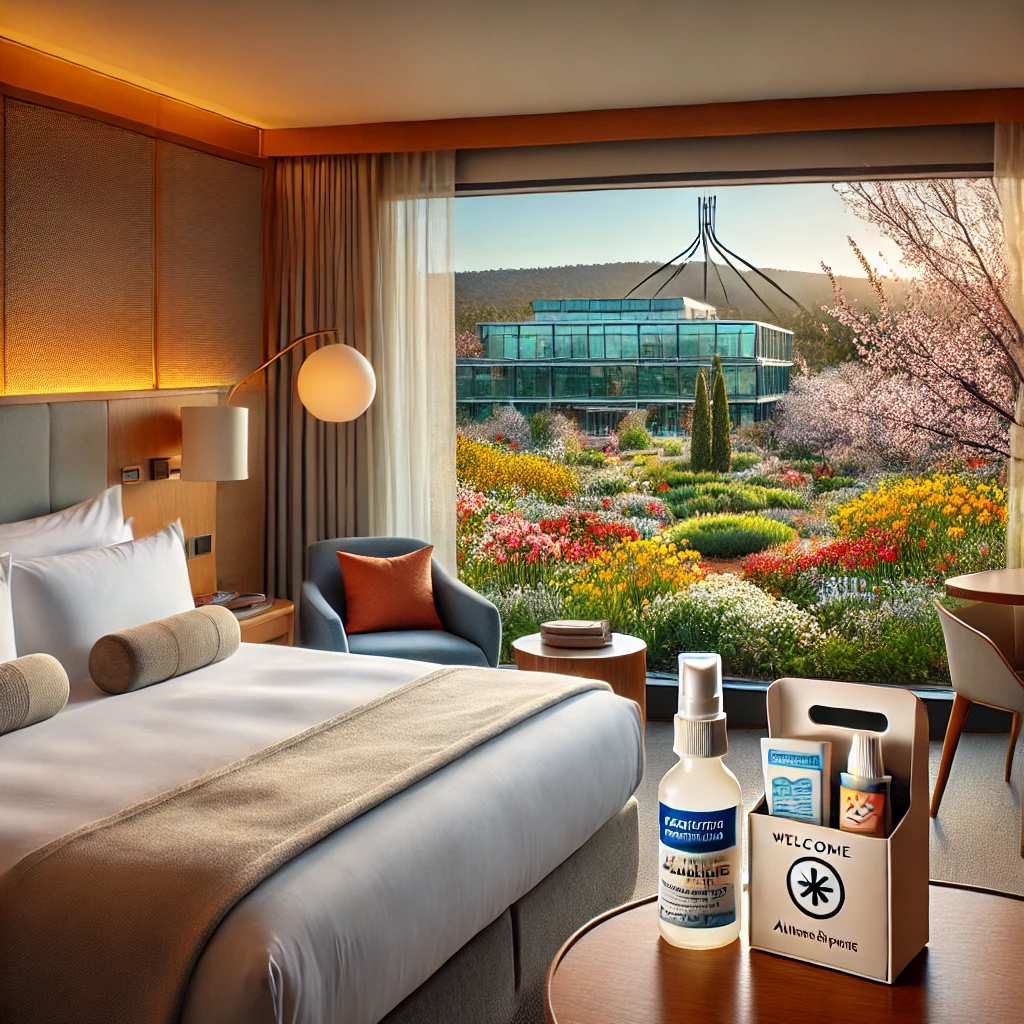Spring in Canberra is a season of rejuvenation, with blossoming gums and vibrant wildflowers adorning the city. However, for allergy sufferers, this season can present challenges, particularly in hospitality settings. Managing pollen allergies in Canberra’s spring is crucial, especially for those enjoying the city’s renowned hotels. This guide outlines 10 essential strategies to help hotel guests and staff navigate pollen allergies effectively, ensuring a comfortable stay amidst Canberra’s blooming landscapes.
1. Understanding Pollen Allergies
Pollen allergies, often referred to as hay fever, affect many, causing symptoms like sneezing and itchy eyes. In Canberra, spring brings high pollen levels, making this a prime concern for visitors and locals alike.
Strategy: Begin by recognizing the triggers. Hotels can help by providing allergy-friendly rooms and informing guests about pollen counts.
2. pollen monitoring systems
Implementing a pollen monitoring system allows hotels to track and inform guests about current pollen levels. This proactive approach helps guests make informed decisions about their activities, ensuring a comfortable stay.
3. allergy-friendly accommodations
Providing rooms with efficient air filtration and hypoallergenic bedding can significantly reduce allergy symptoms. Guests appreciate such thoughtful measures, enhancing their overall experience.
4. education for staff and guests
Educating staff on pollen allergy management enables them to assist guests effectively. Workshops for hotel staff and informational pamphlets for guests are valuable steps in creating an allergy-aware environment.
5. landscape management
Strategically planted low-pollen gardens can mitigate allergy issues. Hotels can landscape with native plants that minimize pollen dispersal, contributing to a healthier environment.
6. ventilation systems
Ensuring proper airflow with high-quality HVAC systems and regular filter maintenance reduces indoor pollen levels, creating a safer space for guests.
7. guest amenities
Supplying allergy-friendly amenities such as saline sprays and HEPA filtersempowers guests to manage their symptoms independently, enhancing their comfort.
8. communication strategies
Regular updates via SMS or email about pollen levels keep guests informed. Transparent communication builds trust and ensures guests are prepared.
9. collaborations with allergists
Partnering with local allergists provides credibility and adds value, offering guests expert advice and allergy testing services.
10. feedback mechanisms
Collecting guest feedback allows hotels to refine their allergy management practices. Continuous improvement ensures a pleasant experience for future guests.
Conclusion
Managing pollen allergies is vital for Canberra’s spring hotel season, offering guests comfort and enhancing hospitality standards. By prioritizing these strategies, hotels can provide an enjoyable experience for all visitors. This guide equips hoteliers with the knowledge to create an allergy-friendly environment, ensuring guests can fully appreciate Canberra’s spring beauty without discomfort.
Peace of mind and comfort are key, especially in Canberra’s unique spring setting. With these strategies, hotels can differentiate themselves and cater to a health-conscious clientele, distinguishing themselves in the competitive hospitality market.

